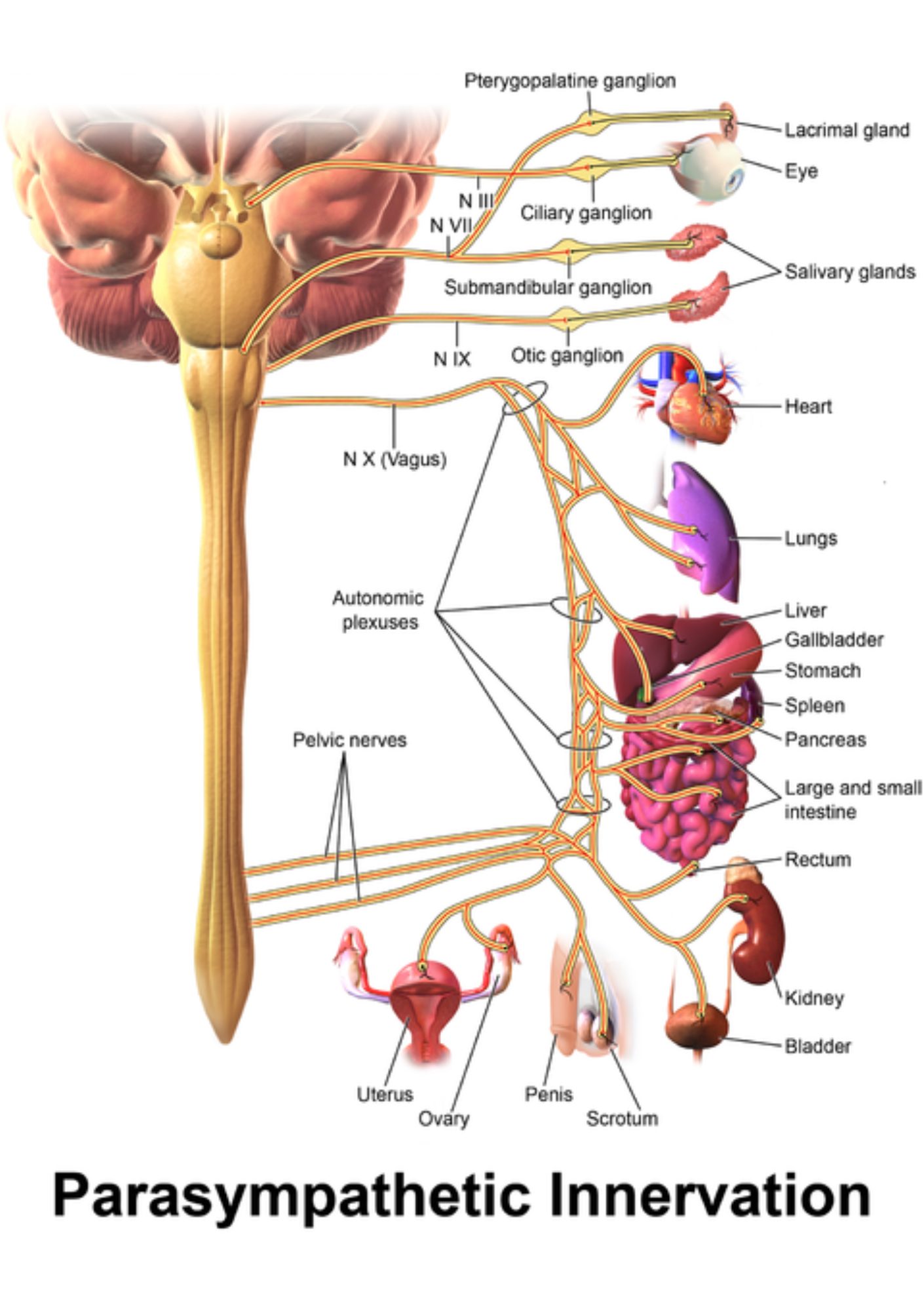Psychophysiology and Breathwork: The Harmony of Mind and Body

Psychophysiology Defined: Psychophysiology is the scientific study of how our mental and emotional states impact our physical responses. It's the exploration of the intricate connection between what's going on in our minds and how our bodies react.
Understanding the concept of psychophysiology can illuminate the powerful connection between the mind and body in this transformative practice.
The Heart of Psychophysiology:
Psychophysiology explores the intricate relationship between our mental and emotional experiences and their physiological responses within the body. It's the art of recognising how our thoughts and emotions influence our physical well-being.
Breathwork as the Bridge:
In the realm of breathwork, our breath serves as the vital bridge between our psychological state and our physiological responses. It's a conduit for channeling intention, awareness, and healing energy.
Science Unveiling the Connection:
- Stress Regulation: Breathwork techniques offer tools to regulate the stress response. By consciously altering the breath, individuals can reduce stress hormones like cortisol, promoting relaxation and a sense of calm.
- Emotional Mastery: Breathwork empowers individuals to navigate and release deeply held emotions. It creates a safe space for acknowledging and processing emotions, fostering emotional intelligence.
- Cognitive Enhancement: Breathwork optimises oxygen intake, enhancing cognitive function. This results in improved concentration, mental clarity, and enhanced decision-making.

THE MIND:
Now, let's focus on the mind. Our thoughts, emotions, and mental states have a profound influence on our physiology.
- Emotions and Hormones: When you experience emotions like fear, joy, or stress, your brain releases specific hormones. These hormones, like adrenaline and cortisol, have direct effects on your body. For example, adrenaline increases your heart rate and sharpens your focus.
- The Power of Visualisation: Your mind is an incredible tool for shaping your body's responses. Close your eyes and vividly imagine a serene beach with the sound of gentle waves. Notice how your body relaxes, your breath deepens, and your heart rate slows. This is the mind directing the body.
- Stress and the Mind: Chronic stress is a prime example of the mind-body connection. When your mind perceives stress, your body reacts with the "fight or flight" response. This involves increased heart rate, shallow breathing, and tense muscles, all triggered by your thoughts and emotions.

THE BODY:
Now, let's switch gears and focus on the body. Our physical responses, such as heart rate, breathing rate, and muscle tension, are tightly linked to our mental and emotional states.
- Breath and Relaxation: You can instantly shift your body into a state of relaxation through conscious breath control. Slow, deep breaths signal to your body that it's time to unwind. This is a tangible way the body responds to your mental intention.
- Heart Rate Variability: Your heart rate isn't a constant drumbeat. It varies based on your emotional state. When you're relaxed and happy, your heart rate shows variability, while stress narrows the variation. This demonstrates how your mental state influences a physical parameter.
- Muscle Tension: Think about a time when you felt tense. You probably noticed your shoulders hunching or your jaw clenching. This physical tension is a direct response to your mental and emotional state.
THE MIND-BODY CONNECTION:
Now, let's bring it all together. The mind-body connection is the dynamic interaction between your mental and emotional experiences and your physical responses.
- Your thoughts and emotions trigger the release of specific chemicals in your body, affecting your heart rate, blood pressure, and even your immune system.
- Conversely, your body's sensations, like a racing heart or shallow breath, send feedback to your brain, which can either reinforce or alter your emotional state.
- Breathwork is a prime example of harnessing the mind-body connection. By consciously changing your breath pattern, you can shift your mental and emotional state, calming stress, enhancing focus, and fostering well-being.
Understanding this intricate interplay between the mind and body empowers you in breathwork. It means you have the tools to consciously influence your physical and emotional well-being by working with both your thoughts and your body's responses. It's the essence of holistic health and personal transformation.
INTEROCEPTION IN BREATHWORK: EXPLORING THE INNER LANDSCAPE

Interoception: The sensory process that allows an organism to sense, interpret, and understand its internal physiological and emotional states. It involves perceiving sensations arising from within the body, such as heartbeat, breath, hunger, thirst, and emotional responses. Interoception plays a fundamental role in self-awareness and helps individuals monitor and regulate their bodily functions and emotions.
Understanding Interoception:
Interoception is your body's ability to perceive and interpret its internal signals and sensations. It's your inner GPS, allowing you to navigate the complex landscape of your physiological responses.
Interoception and Breathwork:
- Tuning In: In the context of breathwork, interoception means paying close attention to what's happening inside your body as you breathe. It's about listening to the subtle cues and sensations that arise with each breath.
- Breath Awareness: Interoception enhances your breath awareness. It helps you feel the rise and fall of your chest, the expansion of your diaphragm, and the flow of oxygen. This deepened awareness transforms breathwork into a more profound and intimate experience.
- Emotional Connection: Interoception isn't limited to physical sensations. It extends to your emotions and feelings. By tuning into your emotional responses during breathwork, you can uncover and process deeply held emotions and tensions.
- Self-Regulation: Interoception equips you with self-regulation tools. It allows you to identify areas of discomfort or tension in your body and work through them with your breath. This self-regulation fosters a sense of empowerment and control.
Interoception as a Compass:
Imagine interoception as your compass in the vast landscape of breathwork. It guides you through the inner terrain, helping you explore the uncharted territories of your body and mind.
As you embark on your breathwork journey, remember that interoception is your trusted companion. It deepens your connection with each breath, making it a gateway to self-discovery, emotional release, and inner healing.
So, embrace interoception in your breathwork practice. Listen to the whispers of your body and emotions. It's not just about how you breathe; it's about how you feel, how you heal, and how you grow. Interoception is your key to unlocking the profound potential within.
THE VAGUS NERVE: YOUR BREATHWORK COMPANION
Vagus Nerve: The tenth cranial nerve, also known as the pneumogastric nerve, that originates in the brainstem and extends to various organs, including the heart, lungs, and digestive tract. The vagus nerve is a key component of the parasympathetic nervous system, responsible for regulating many automatic bodily functions, such as heart rate, digestion, and respiratory rate. It plays a crucial role in maintaining balance and homeostasis in the body.

As a Breathwork Facilitator, educating your clients about this concept is an invaluable gift, as it holds the power to unlock a profound state of inner balance and well-being. In the realm of breathwork, the concept of vagal toning is like discovering the key to your body's very own harmony orchestra, understanding this neural conductor is essential for mastering the art of conscious breathing.
Meet the Vagus Nerve:
The vagus nerve, often referred to as the "wandering nerve," is a remarkable component of your autonomic nervous system. Picture it as the maestro of your body's symphony, conducting the intricate dance of physiological responses.
The Vagus Nerve's Crucial Role:
- Balancing the Autonomic Nervous System: The vagus nerve is like a bridge between the two realms of your autonomic nervous system – the "fight or flight" response and the "rest and digest" state. It plays a pivotal role in maintaining balance between these two modes.
- Heart's Rhythmic Dance: The vagus nerve has a profound influence on your heart rate. When activated, it gently slows down your heart rate, promoting a sense of calm and emotional equilibrium.
- Harmony in Digestion: This nerve also extends its influence to your digestive system. Activation of the vagus nerve supports optimal digestion, aiding in nutrient absorption and overall gut health.
The Vagus Nerve and Breathwork:
Now, let's explore how the vagus nerve intersects with breathwork:
- Vagal Toning: Specific breathwork techniques, such as slow, deep diaphragmatic breathing, can stimulate and tone the vagus nerve. This stimulation is akin to inviting the conductor to lead your body's orchestra into a harmonious composition.
- Invoking the Relaxation Response: As the vagus nerve is activated, your body's relaxation response is ignited. Stress hormones take a back seat, your heart rate decelerates, and your body gracefully transitions from tension to tranquility.
- Emotional Equilibrium: The vagus nerve's influence extends to emotional regulation. When it's in tune, it empowers you to navigate intense emotions, fostering a sense of calm and emotional resilience.
Your Role as a Guide:
As an Exercise Physiologist teaching breathwork, you hold the key to helping your students harness the power of vagal toning. You're guiding them toward a profound state of inner balance, where the vagus nerve conducts the symphony of well-being.
In Conclusion:
Incorporating the vagus nerve into your breathwork practices is akin to holding a key to the realm of inner harmony and well-being. By comprehending and consciously stimulating this nerve, you become the conductor of your own symphony, leading your body and mind towards profound relaxation, emotional balance, and transformation. Allow the melodies of breath and the vagus nerve to guide you toward the depths of inner peace and vitality in your breathwork journey.
